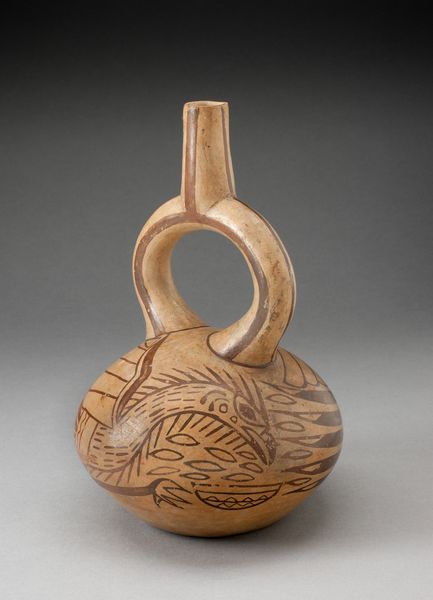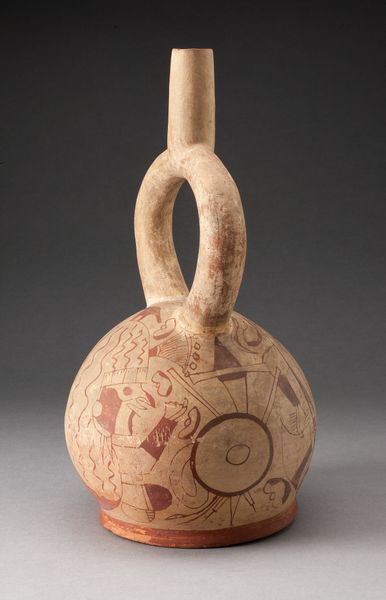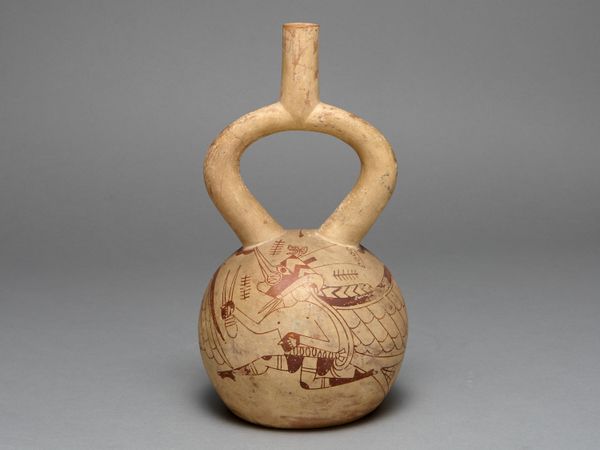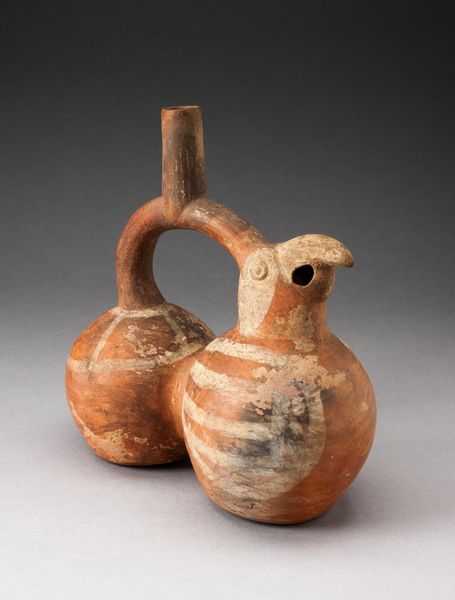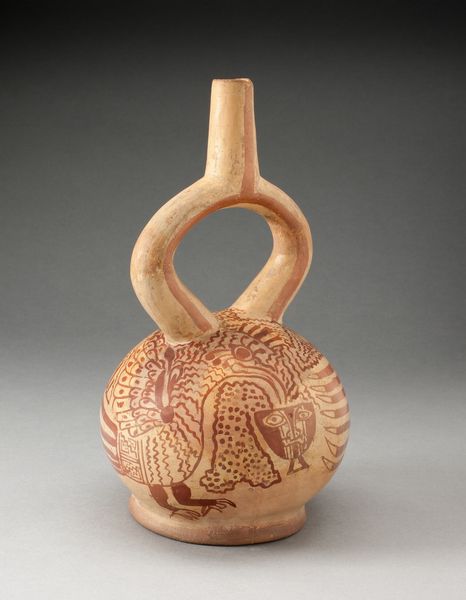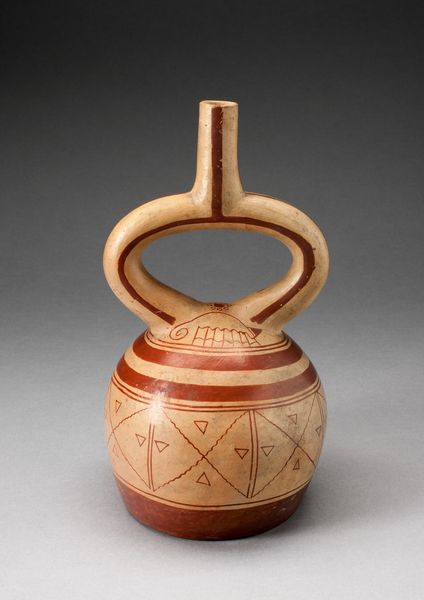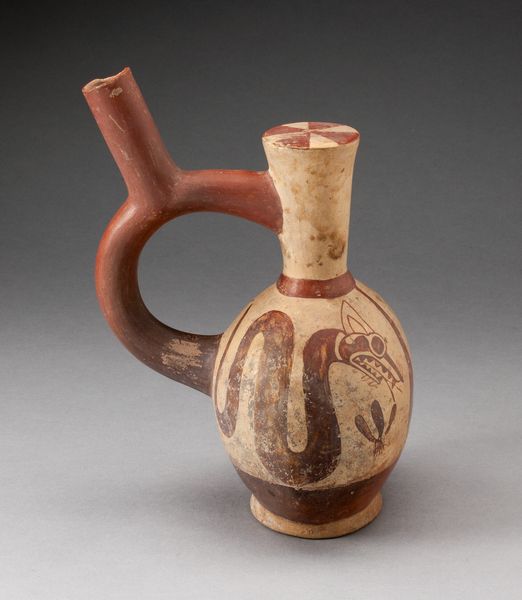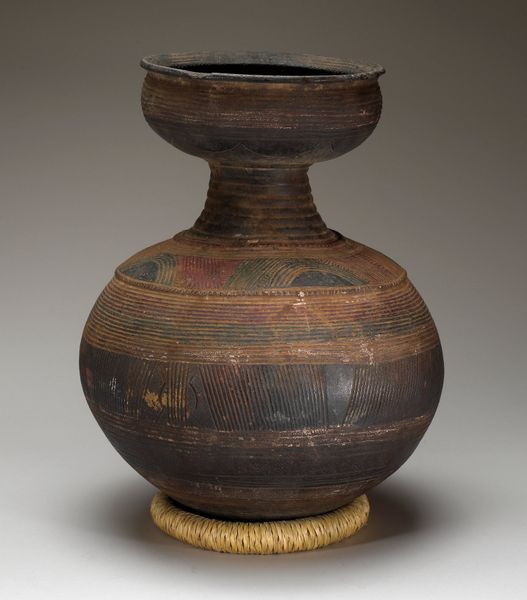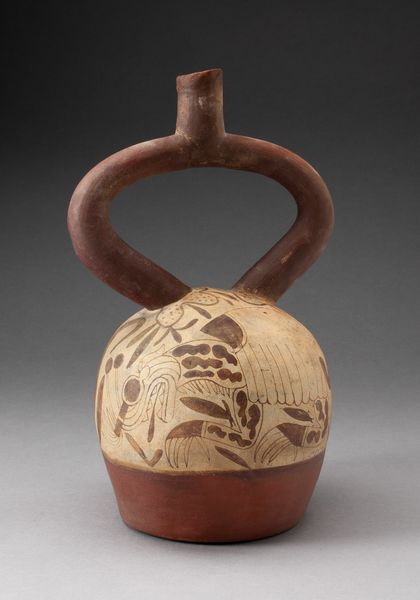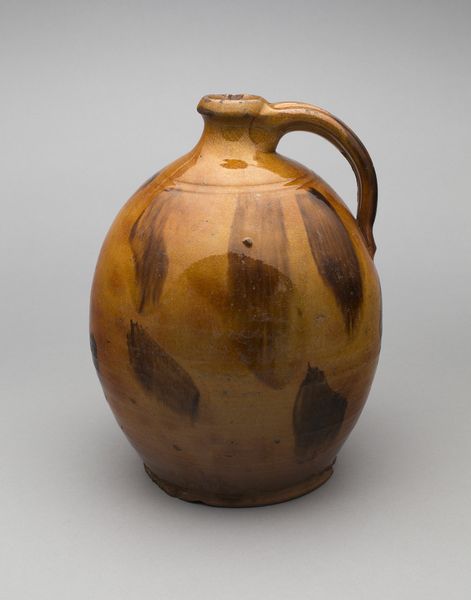
Globular Stirrup Vessel with Depicting Abstract Animals, Possibly Overpainted c. 100 - 500
0:00
0:00
ceramic, terracotta
#
ceramic
#
figuration
#
terracotta
#
indigenous-americas
Dimensions: H. 22 cm (8 5/8 in.)
Copyright: Public Domain
Editor: This is a Moche ceramic vessel from around 100 to 500 CE, entitled "Globular Stirrup Vessel with Depicting Abstract Animals, Possibly Overpainted." It strikes me as so simple in form, yet the details hint at a hidden complexity. How would you interpret the visual aspects of this work? Curator: Considering the object as a self-contained aesthetic system, note the masterful way the artist utilizes the globular form. The lines create divisions of space, yes, but also serve as visual anchors for the abstract depictions. Observe how the stirrup spout, a distinctive feature, echoes the curved lines found within the painted motifs, achieving unity of form and design. Editor: That’s a very astute observation about the spout. I was thinking about the lines dividing the sphere. They appear functional, somehow reinforcing its shape. Curator: Indeed. Semiotically, these lines can be viewed as boundaries or pathways. It is also interesting to note the earth-toned palette. There are dark areas near the base and upper band of the spherical shape; in contrast to the bright areas where we see implied images. It’s simple in hue, yet powerfully communicative, would you agree? Editor: I do. So, would you say the artist achieved a sense of balance despite using, as the title states, abstraction to depict the animals? Curator: Most definitely, The artist masterfully balances positive and negative space in these seemingly crude figures. In fact, their ambiguous presentation makes the composition even more engaging. What have you learned from viewing this artwork today? Editor: The value of taking into consideration an object’s formal elements, especially their compositional function in defining space, rather than looking directly for narrative first. Thank you! Curator: I, likewise, am encouraged by our close look at materiality and geometric values for defining symbolic context.
Comments
No comments
Be the first to comment and join the conversation on the ultimate creative platform.
